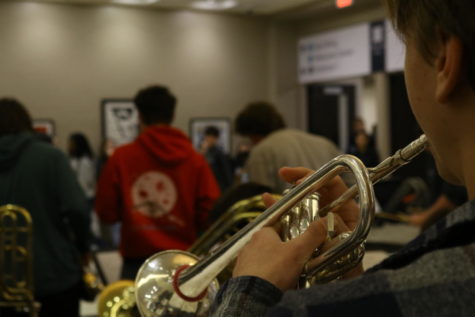Small team, a double-edged sword
February 18, 2019
Due to the small size of their team, the ETHS fencing team puts in the time and effort of a larger team, which has subsequently helped them build community and communication.
“The team is able to get to know each other and check-in and support each other when they’re not competing,” coach Clinton Smith says. “In a team of less than 20 total athletes, everyone knows each other by the end of the first week, and this allows us to come together as a group to create a unified team.”
However, the small nature of the team does not come without its many challenges. Where other schools boast fencing teams of 80 to 100 people, ETHS’s fencing team is composed of around 20 fencers, which causes a lack of depth throughout the team.
“If someone has to miss a practice or a competition, particularly a team dual-meet, then we’re down that spot,” Smith says. “Sometimes that means we start the match down by a few match points.”
Along with this lack of depth, the team also suffers from a lack of respect and recognition from the school, allowing for a weaker fan base in comparison to other recognized ETHS sports.
“We’re still a club sport, even though it’s an Olympic sport and a varsity sport at other schools,” sophomore Becky Arden says. “Other sports end up getting more funding and recognition.”
In response to the team’s many trials this season, an essential component of the team’s success arose from the team leaders’ selflessness and support of their teammates.
“From coordinating the team in the run-up to our home meet, organizing recruitment at the various activity fairs the school hosts, and making sure the newer fencers are where they should be when they should be, the team’s leadership has been invaluable this year,” Smith says.
After losing a considerable amount of fencing last year, this year’s returners took to recruitment and expansion of the team, which has increased the communication within the team’s community.
“We had to recruit new people through the activities fair, so by setting that up, I’ve learned communication skills while also having the team come together,” Arden says.
While the season has come to a close, the team remains hopeful for more success during next season and seasons to come. Until then, the close-knit team continues to work on their team’s community and communication, while still focusing on improving individual fencer success.
“If success is to be measured in much more than a simple Win-Loss record, then this team was an unqualified success based on the way they treated each other and the way they comported themselves all season,” Smith says. “I look forward to seeing how they perform in coming years with more experience and more technical expertise.”













